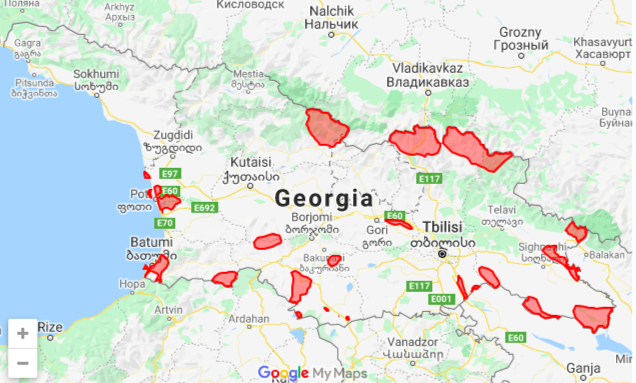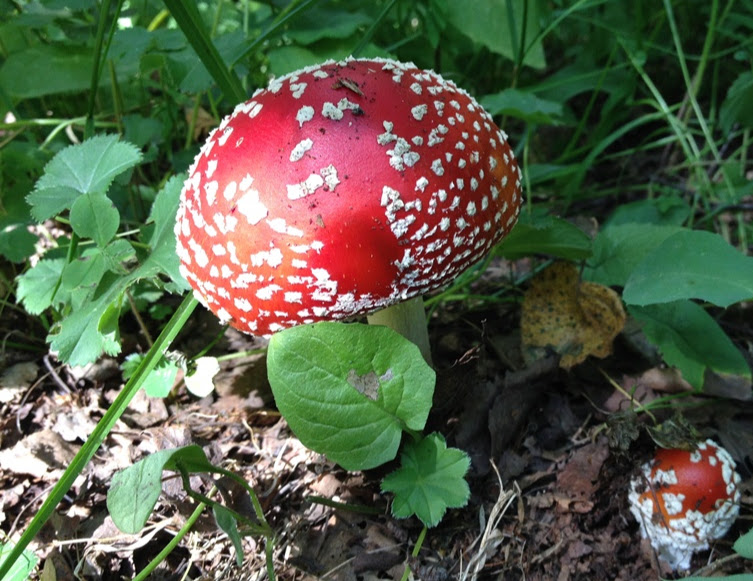Taxonomy
Kingdom Animalia (16266)Phylum Chordata (708)
Class Reptilia (56)
Order Testudines (3)
Family Testudinidae (1)
Genus Testudo (1)
Species Testudo graeca
Subspecies Testudo graeca ibera
Subspecies Testudo graeca nikolskii
Browse by taxonomy
Simple search by name
Testudo graeca ✓
Mediterranean Spur Thighed Tortoise, ხმელთაშუაზღვეთის კუ
Name According To: https://reptile-database.reptarium.cz/; www.biodiversity-georgia.net
Species: graeca
Taxon Rank: Species
Scientific Name Authorship: Linnaeus, 1758
Vernacular Name: Mediterranean Spur Thighed Tortoise
Georgian Name: ხმელთაშუაზღვეთის კუ
GBD Remarks:
May be polytypic in Georgia. The most of the country has local subspecies T. g. ibera, T.g.nikolskii lives at the NE Black Sea coast (extincting population), and perhaps one more subspecies is found in the south of the country.
Conservation Status (International): IUCN status (international) VU, A1cd, ver 3.1. Definition (Reduction in population size based on an observed, estimated, inferred or suspected population size reduction of ≥ 50% over the last 10 years or three generations, whichever is the longer, where the causes of the reduction are: clearly reversible and understood and ceased, based on a decline in area of occupancy, extent of occurrence and/or quality of habitat and actual or potential levels of exploitation). Globally threatened, although relatively common/abundant in Georgia.
Conservation Status (national): Georgian Red List. IUCN National status (2006) VU (A1cd): Included in the national Red List, based on the international conservation status.
Economic importance (national): Currently low. Occasionally, illegally collected and sold as a pet, no information on the international trade so far. An important part of the local ecosystems.
Methodological approaches for monitoring: Range analysis, range modeling, validation of presence at known sites by searching of adults, different count methods (mark-recapture, transect count).
Research institutions: Georgian National Museum, Institute of Palaeobiology, contact – Vyacheslav Chkhikvadze. ISU, Institute of Ecology, Institute of Zoology. contact – David Tarkhnishvili. Currently, no ongoing projects.
Relevant website: http://www.iucnredlist.org/details/21646/0; http://nacres.org/rept02.html
Why to monitor: Globally threatened species, potentially subjected to illegal trade as pet, including international trade. No data available on the population size or its dynamics. However, no identified decline of range or population size for Georgia.
Preliminary suggestion for monitoring: Insert existent data (Range model, known locations) in a general easily accessible database for protected species of Georgia. Organise biannual monitorig of presence-absence tortoises at 20 locations evenly distributed throughout Georgian range. and density estimates (mark-recapture) at 3-4 selected locations.
პოლიტიპურია საქართველოში. აღმოსავლეთ საქართველოში გვხვდება T. g. ibera, T.g.nikolskii ბინადრობს შავი ზღვის სანაპიროზე გაგრიდან დასავლეთით. შესაძლოა სამხრეთ საქართველოში კიდევ ერთი ფორმის არსებობს.
კონსერვაციული სტატუსი (საერთაშორისო): IUCN სტატუსი VU, A1cd, ver 3.1. განმარტება: (პოპულაციის შემცირება, რაზეც მეტყველებს შეფასება ან ვარაუდი, მოსალოდნელი პოპულაციის შემცირება ≥ 50% ბოლო ათი წლის ან სამი თაობის განმავლობაში, როდესაც შემცირების მიზეზია: შეცვლადი და გასაგები, რაც ემყარება დაკავებული ფართის შემცირებას, და/ან ჰაბიტატების ხარისხს და გამოყენების მაღალ დონეს). გლობალურად მოწყვლადი სახეობაა, თუმცა შედარებით ჩვეულებრივია საქართველოში.
კონსერვაციული სტატუსი (ეროვნული): საქართველოს წითელი ნუსხა. IUCN ეროვნული სტატუსი (2006) VU (A1cd): შეტანილია ეროვნულ წითელ ნუსხაში, სახეობის საერთაშორისო სტატუსიდან გამომდინარე.
ეკონომიკური მნიშვნელობა (ეროვნული): ამჯამად დაბალი. ზოგჯერ ხდება უკანონო ამოღება ბუნებიდან სახლშო ყოლის მიზნით. უცნობია საერთაშორისო არალეგალური ვაჭრობის შემთხვევები. ადგილობრივ ეკოსისტემებში მნიშვნელოვან როლს ასრულებს.
მონიტორინგის მეთოდები: არეალის ანალიზი და მოდელირება, ცნობილი ლოკალიტეტების ვალიდაცია, თვლები (დანიშვნა და კვლავდაჭერა, ტრანსექტებზე აღრიცხვები).
კონტაქტები და პროექტები: საქარველოს ეროვნული მუზეუმი, პალეობიოლოგიის ინსტიტუტი, საკონტაქტო პირი - ვიაჩესლავ ჩხიკვაძე. ილიას სახელმწიფო უნივერსიტეტის ეკოლოგიის და ზოოლოგიის ინსტიტუტები, საკონტაქტო პირი - დავით თარხნიშვილი. მიმდინარე პროექტები არ არსებობს.
სასარგებლო ლინქები: http://www.iucnredlist.org/details/21646/0; http://nacres.org/rept02.html
http://assets.panda.org/downloads/cepf_caucasus_web_1.pdf.
რატომაა საჭირო მონიტორინგი: გლობალურად მოწყვლადი სახეობაა, პოტენციალურად ემუქრება საერთაშორისო არალეგალური ვაჭრობა. პოპულაციის ზომის და დინამიკის შესახებ საქართველოში მონაცემები არ არსებობს. თუმცა, საქართველოში რიცხოვნობის კლება არაა სავარაუდო.
რეკომენდაცია: ჰაბიტატების და არეალის შესახებ ინფორმაცია შეტანილ იქნას მისაწვდომ მონაცემთა ბაზაში, ჩატარდეს 20 შემთხვევითად შერჩეწული ჰაბიტატის მონიტორინგი ორ წელიწადში ერთხელ და რიცხოვნობის შეფასება (დანიშვნა და კვლავდაჭერა) 3-4 შერჩეულ ლოკალიტეტში.
Page Authors: David Tarkhnishvili ,
Reference of occurrence in Georgia: Tarkhnishvili, D., A. Kandaurov & A. Bukhnikashvili, 2002. Declines of amphibians and reptiles in Georgia during the 20th century: virtual vs. actual problems. Zeitschrift fur Feldherpetologie 9: 89-107.
Information from GBIF about Testudo graeca
GBIF scientific name: Testudo graeca Linnaeus, 1758
GBIF taxonomic status: ACCEPTED

Conservation Status
This section is under construction
National Red List Status of Testudo graeca have not been evaluated



